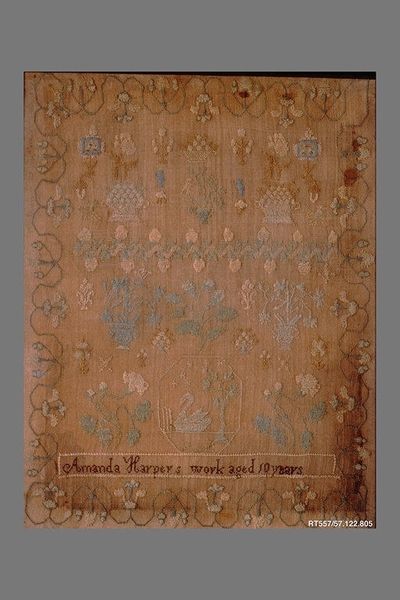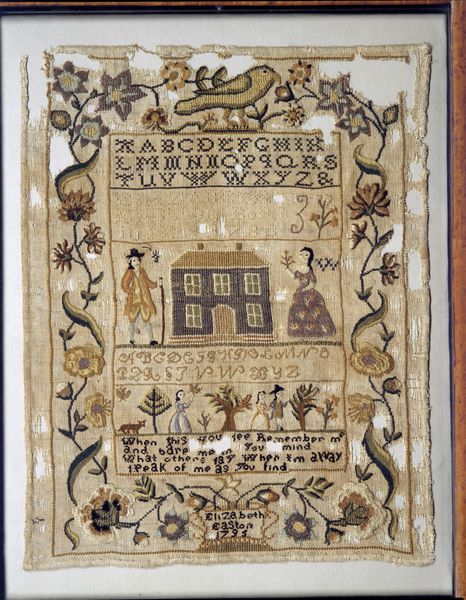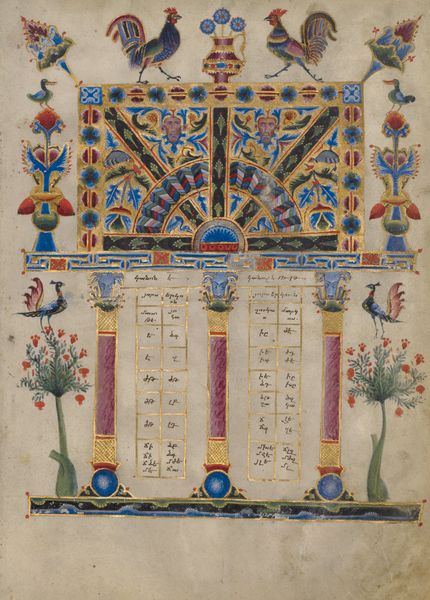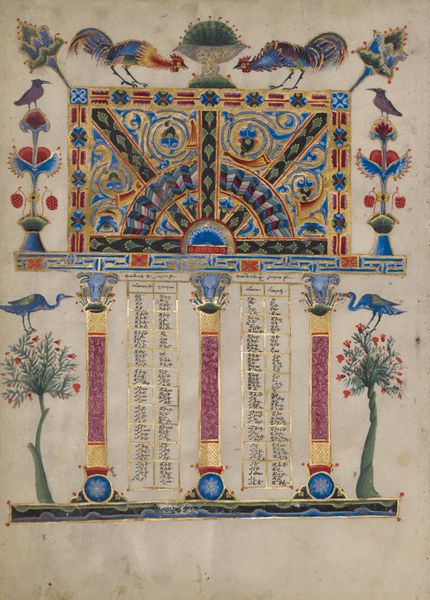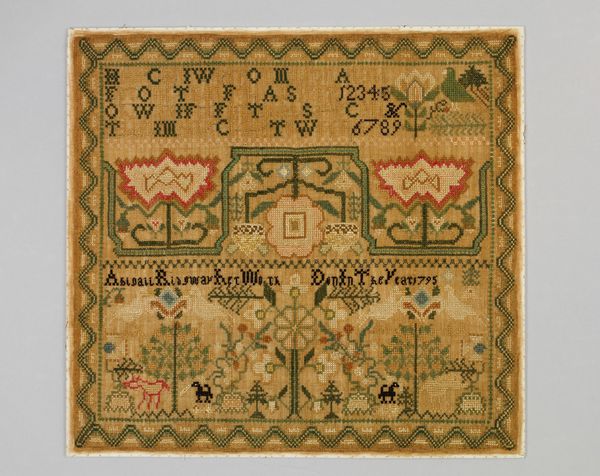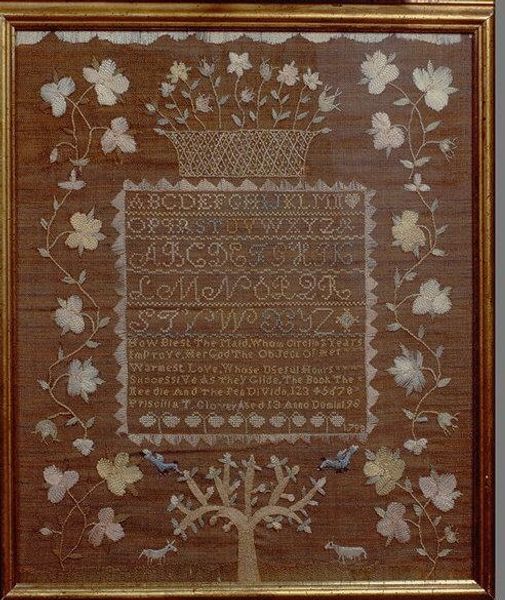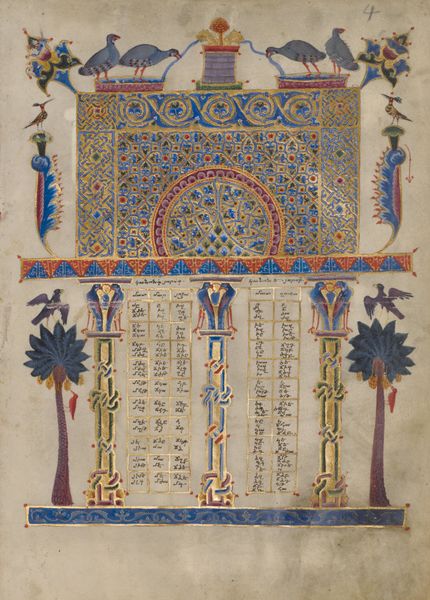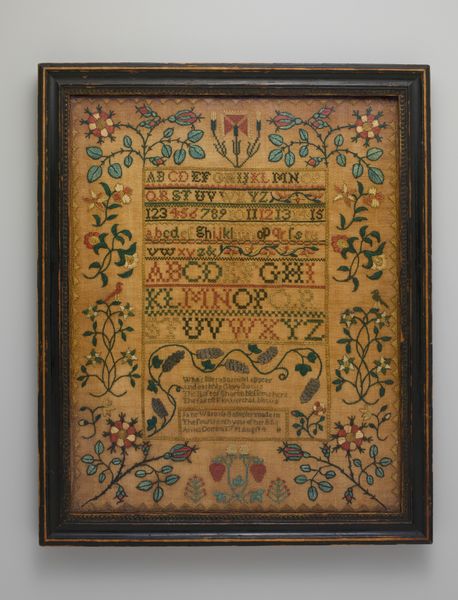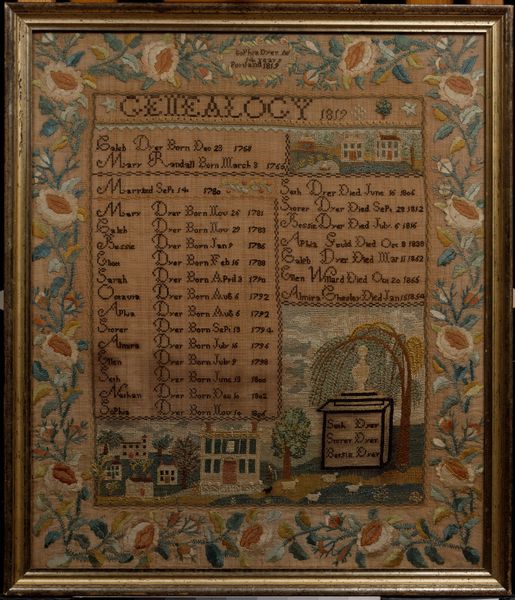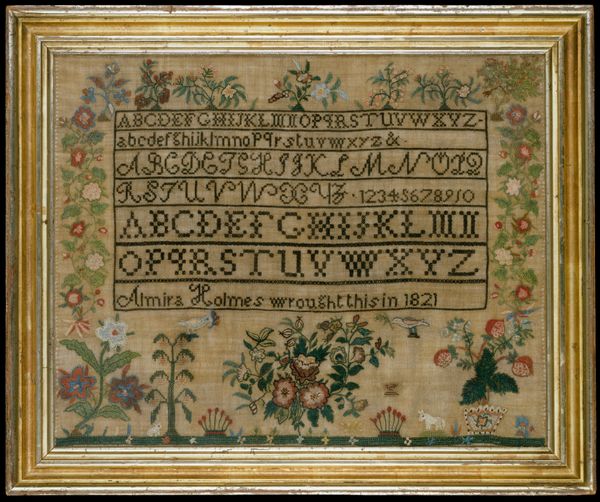
drawing, mixed-media, tempera, textile
#
portrait
#
tree
#
drawing
#
mixed-media
#
tempera
#
textile
#
house
#
hand-embroidered
#
folk-art
#
united-states
#
mixed media
Dimensions: 20 x 18 3/4 in. (50.8 x 47.6 cm)
Copyright: Public Domain
Curator: This meticulously worked sampler, known as the "Embroidered Sampler," dates from the period between 1802 and 1805. Its creator, Lydia Headly, a young American woman, showcases her skills with needle and thread. It now resides here at the Metropolitan Museum of Art. Editor: Immediately, I'm struck by the regimented order. The textual segments give way to small pastoral scenes of houses, trees, and stylized figures. It almost has the feel of a landscape drawing. Curator: Quite right. Notice how the ordering principle operates in tiers. We have these bands of names and birth dates, then decorative rows leading down to more elaborate vignettes. It is important to view the structure as the main narrative device in such textile pieces. How do these different blocks relate? Editor: From a socio-historical perspective, these samplers often functioned as a demonstration of skill, an assertion of domestic competence, and even as a mnemonic device for young women within a structured domestic environment. The needlework signifies discipline, perhaps also memorializing familial lineage as evidenced by all the dates of birth worked onto the textile’s surface. Curator: Precisely. And let us examine the limited, almost austere color palette. Primarily shades of brown and red on a cream background. This reinforces a sense of constraint, even severity. There’s a direct contrast with the overflowing ornamentation often seen in more elaborate European needleworks. It points to an artistic sensibility based around an aesthetic of functional beauty rather than of elaborate artistry. Editor: The relatively unadorned style certainly mirrors the lives of many young women in 19th-century America for whom material resources were often modest and lives more practical in nature. These were not decorative objects for aristocrats, but articles documenting crucial aspects of family history made from and for a working class or mercantile culture. The symbolism of a house embroidered here may be speaking as much about a family’s stability as about future marriage prospects for the young needleworker. Curator: Indeed. The house motif—simple, unpretentious—reflects a clear geometric form stripped bare of needless elaboration. Likewise, even the seemingly innocent flora displays a purposeful symmetry; these botanical designs are rigidly held, contained, and therefore tamed by form and balance. Editor: So, where you find evidence of deliberate artistic choices rooted in form, I detect hints of lived experience woven into the very fibers of its structure and content. Ultimately, perhaps that speaks most powerfully. Curator: Well said. Its success lies, perhaps, in this harmonious blend of both order and historical sentiment.
Comments
No comments
Be the first to comment and join the conversation on the ultimate creative platform.

